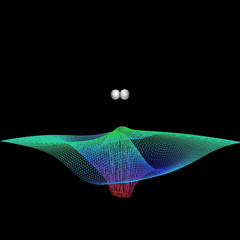The LazEv code implements the "moving punctures" breakthrough technique for evolving compact-object spacetimes using numerical relativity. The code is based on the LazEv framework, is a set of tools for constructing arbitrary-order finite difference codes for evolutions of hyperbolic equations, as well as an extensive set of analysis codes for numerical relativity simulations. The framework is constructed such that the evolution equations can be coded as tensorial equations in Mathematica. These tensorial equations are then automatically converted into C code, and optionally, directly as Cactus Code thorns for use in EinsteinTookit. With this latter option, the LazEv code can leverage the sophisticated parallel adaptive mesh architecture found in the Cactus code and the Carpet AMR driver. Our codes also make use the AHFinderDirect, the TwoPunctures code. In addition to generating evolution code, the LazEv framework also contains an extensive collection of analysis tools, including, waveform extraction, spin calculation, proper distance measurement, among others. The LazEv code directly supports evolutions of highly-spinning black holes generated using the HiSpID code.
Key References:
- Accurate of Orbiting Black Hole Binaries without Excision
- Accurate black hole evolutions by fourth order numerical relativity
- Foundations of Multiple Black Hole Evolutions
- Puncture initial data for black-hole binaries with spins and high boosts
Grants:
